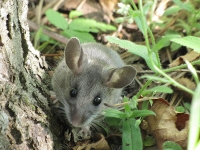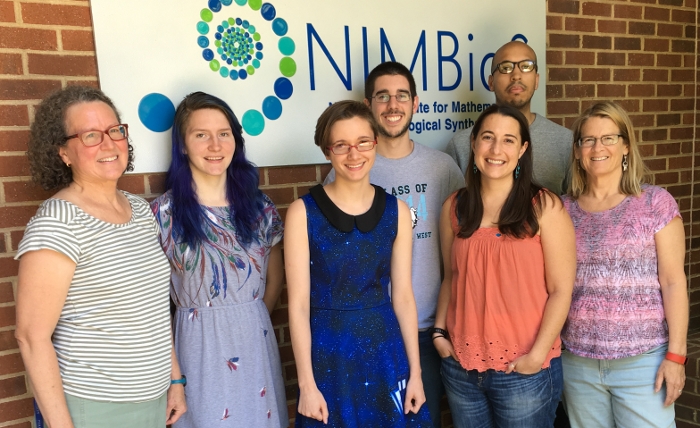2016 SRE Project
Mouse Trap! Modeling the Spread of Mice and Hantavirus in Pressured Landscapes
Mentors:
Dr. Colleen Jonsson, NIMBioS; Microbiology, UTK
Dr. Suzanne Lenhart, NIMBIoS Assoc. Director for Education and Outreach; Mathematics, UTK
Dr. Megan Rúa, NIMBIoS Postdoctoral Fellow
Participants: Jeff DeSalu (The Ohio State Univ.), Morganne Igoe (Univ. of the Minnesota-Twin Cities), Joey Moran (Unity College), and Theresa Sheets (Univ. of Maryland-Baltimore County)
 More than half of all human infectious diseases originate from spillover of RNA viruses from wildlife. Globalization, environmental and anthropogenic changes promote opportunities for spillover and emergence of RNA viruses from wildlife to humans. For rodent-borne zoonotic viruses, abiotic pressures may comprise alterations in climate and landscape that alter habitat (e.g. size, composition, fragmentation), resource availability (e.g. water, food), and/or rodent community structure (e.g. species richness and diversity, population abundance and structure). These drive contact rates and host well-being. To investigate the effects of different landscapes and resources on hantavirus spread in mice populations, we will build a model representing the population structure and virus spread.
We will be using data from sites with different ecological features and multiple traps to help formulate and parameterize the model.
More than half of all human infectious diseases originate from spillover of RNA viruses from wildlife. Globalization, environmental and anthropogenic changes promote opportunities for spillover and emergence of RNA viruses from wildlife to humans. For rodent-borne zoonotic viruses, abiotic pressures may comprise alterations in climate and landscape that alter habitat (e.g. size, composition, fragmentation), resource availability (e.g. water, food), and/or rodent community structure (e.g. species richness and diversity, population abundance and structure). These drive contact rates and host well-being. To investigate the effects of different landscapes and resources on hantavirus spread in mice populations, we will build a model representing the population structure and virus spread.
We will be using data from sites with different ecological features and multiple traps to help formulate and parameterize the model.

|
| Project group (from L): Suzanne Lenhart, Theresa Sheets, Morganne Igoe, Joey Moran, Megan Rúa, Jeff DeSalu, Colleen Jonsson |
Return to SRE 2016.
NIMBioS
1122 Volunteer Blvd., Suite 106
University of Tennessee
Knoxville,
TN 37996-3410
PH: (865) 974-9334
FAX: (865) 974-9461
Contact NIMBioS


